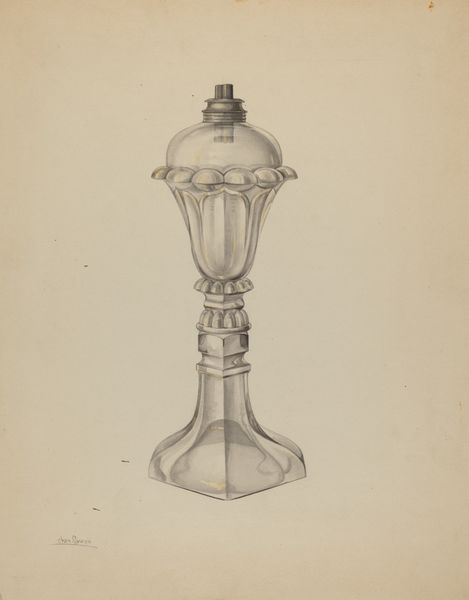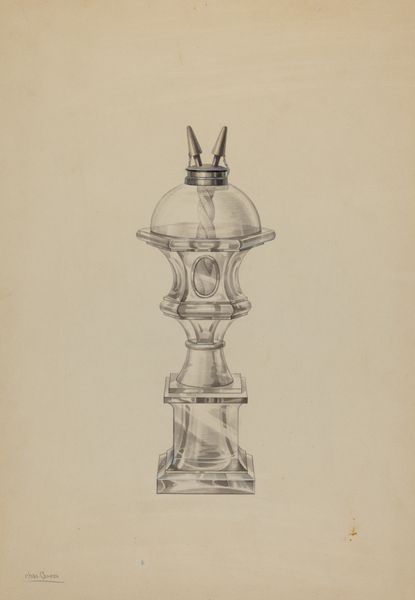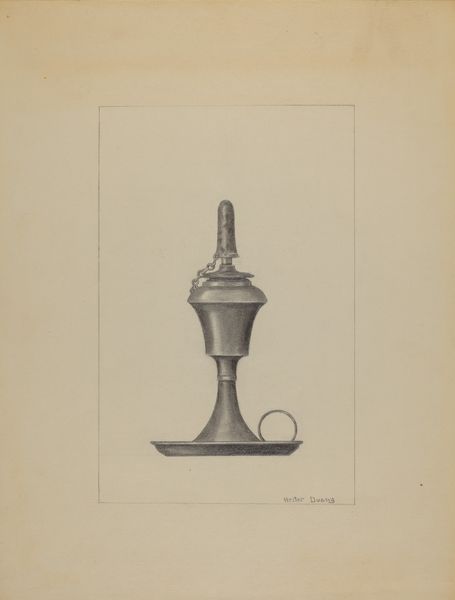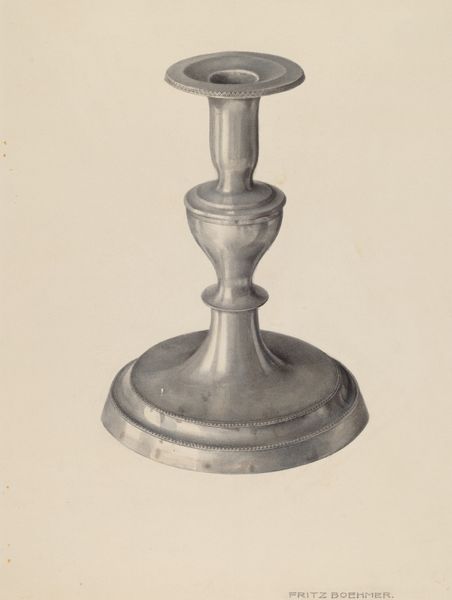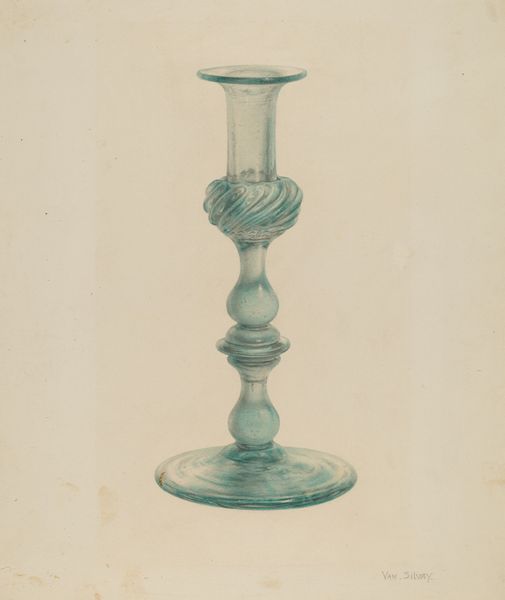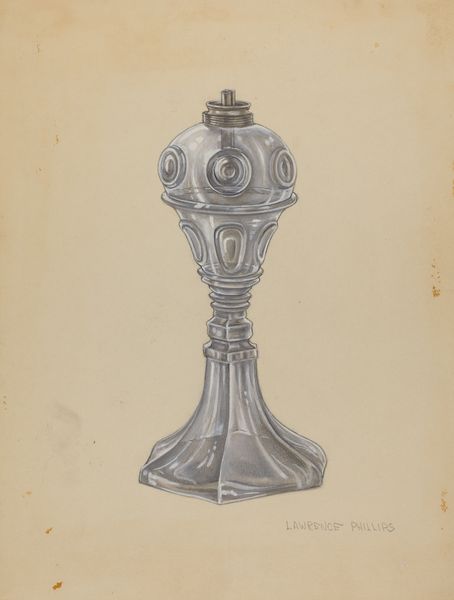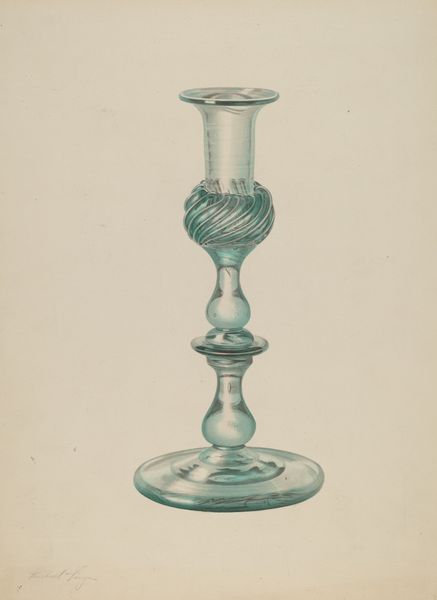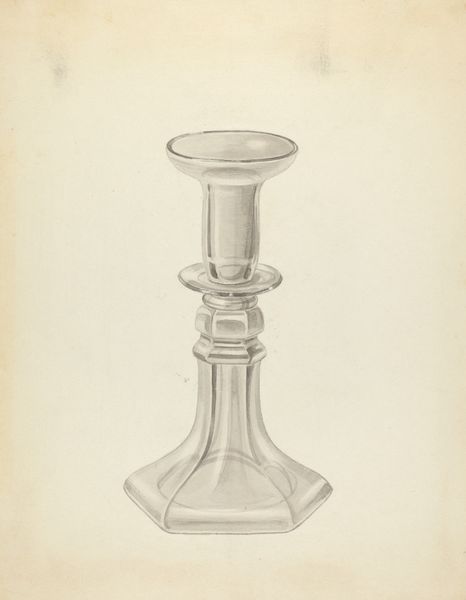
drawing, pencil
#
drawing
#
form
#
pencil drawing
#
pencil
#
line
#
realism
Dimensions: overall: 50.9 x 38.4 cm (20 1/16 x 15 1/8 in.)
Copyright: National Gallery of Art: CC0 1.0
Curator: At first glance, this strikes me as incredibly serene, almost monastic in its simplicity. Editor: Here we have Joseph Mitry’s "Candlestick," rendered circa 1940. It's a pencil drawing, carefully depicting the play of light on the glass form. What's interesting to me is how a seemingly simple object embodies so much about the processes of creation. Curator: Processes? It seems quite representational, meticulously copying the item in life with light and shadows. The attention to tonal variation gives depth and presence, wouldn't you agree? Editor: Exactly. But think about it: Why choose to draw a candlestick, and how was it produced? This was made around World War II when resources were scarce. Glass production would have been complex, labour intensive. And here Mitry captures not just its form, but almost imbues it with an ethereal quality by opting to use pencil as a medium. How accessible and affordable was such an artwork in 1940? How many glass candle holders existed, compared with other materials like wood or iron? Curator: I hadn’t considered its material context that deeply. It seems timeless; the soft lines almost eliminate shadows and texture to soften edges between realism and geometric reduction, like something you might see from Synthetic Cubism a few decades prior, perhaps a nod to modern advancements like manufacturing that are captured within it. Editor: Perhaps. Also, reflect upon what function drawing served as a reproductive medium and what social class this item came from; we see the convergence of aesthetic choice, the artist's hand, industrial capabilities, and a moment of history which all meet upon that paper. And that changes how we look at it today. Curator: You’ve made me reconsider my initial, purely visual assessment. It truly invites a broader understanding, indeed. Its humble presence almost contradicts the material complexities you’ve highlighted. I must admit it's changed how I now perceive it! Editor: And I appreciate your sensitivity to line and form; seeing it within an artistic canon also helps ground my material analysis. There are clearly intersecting factors beyond materiality.
Comments
No comments
Be the first to comment and join the conversation on the ultimate creative platform.

